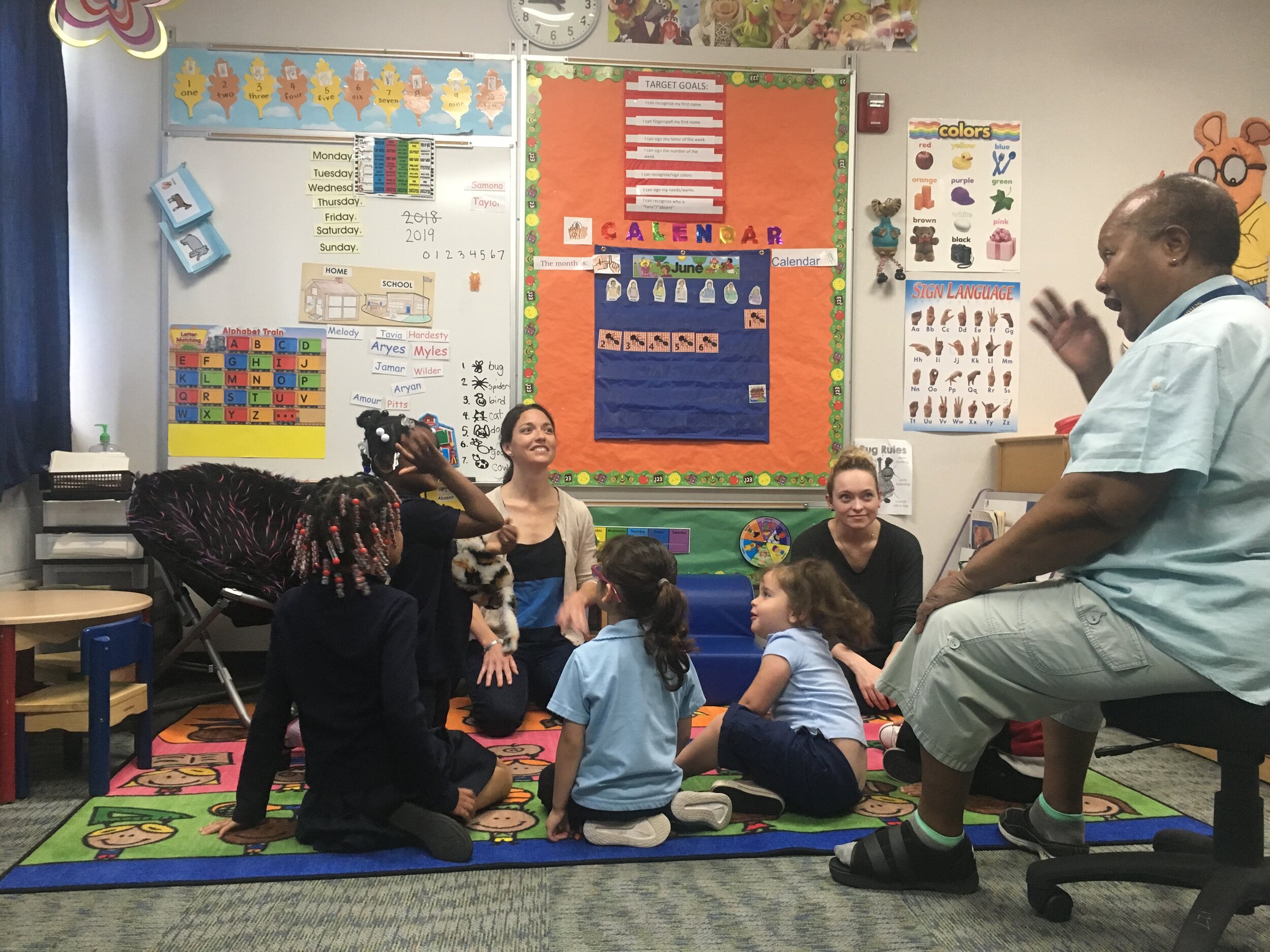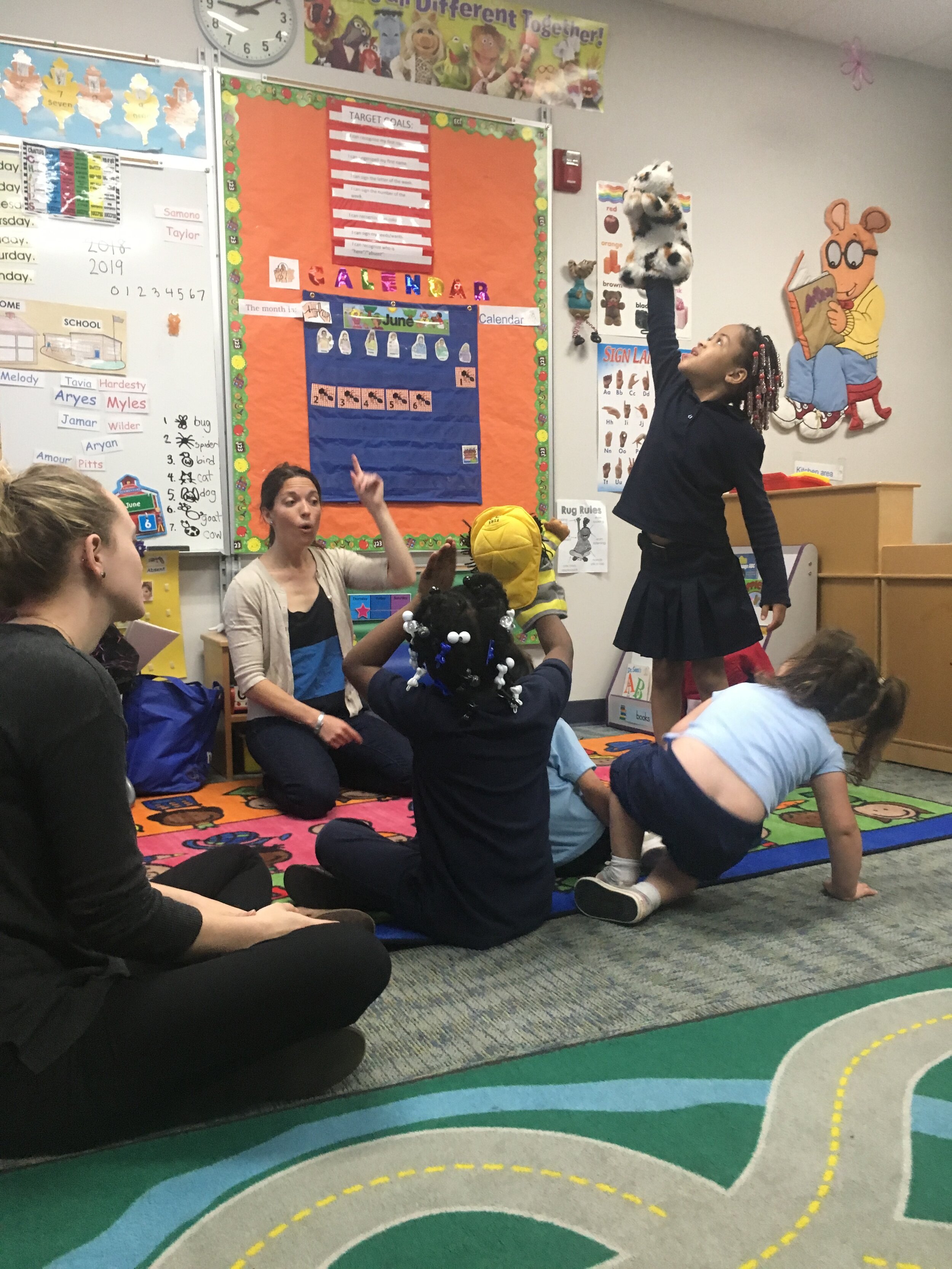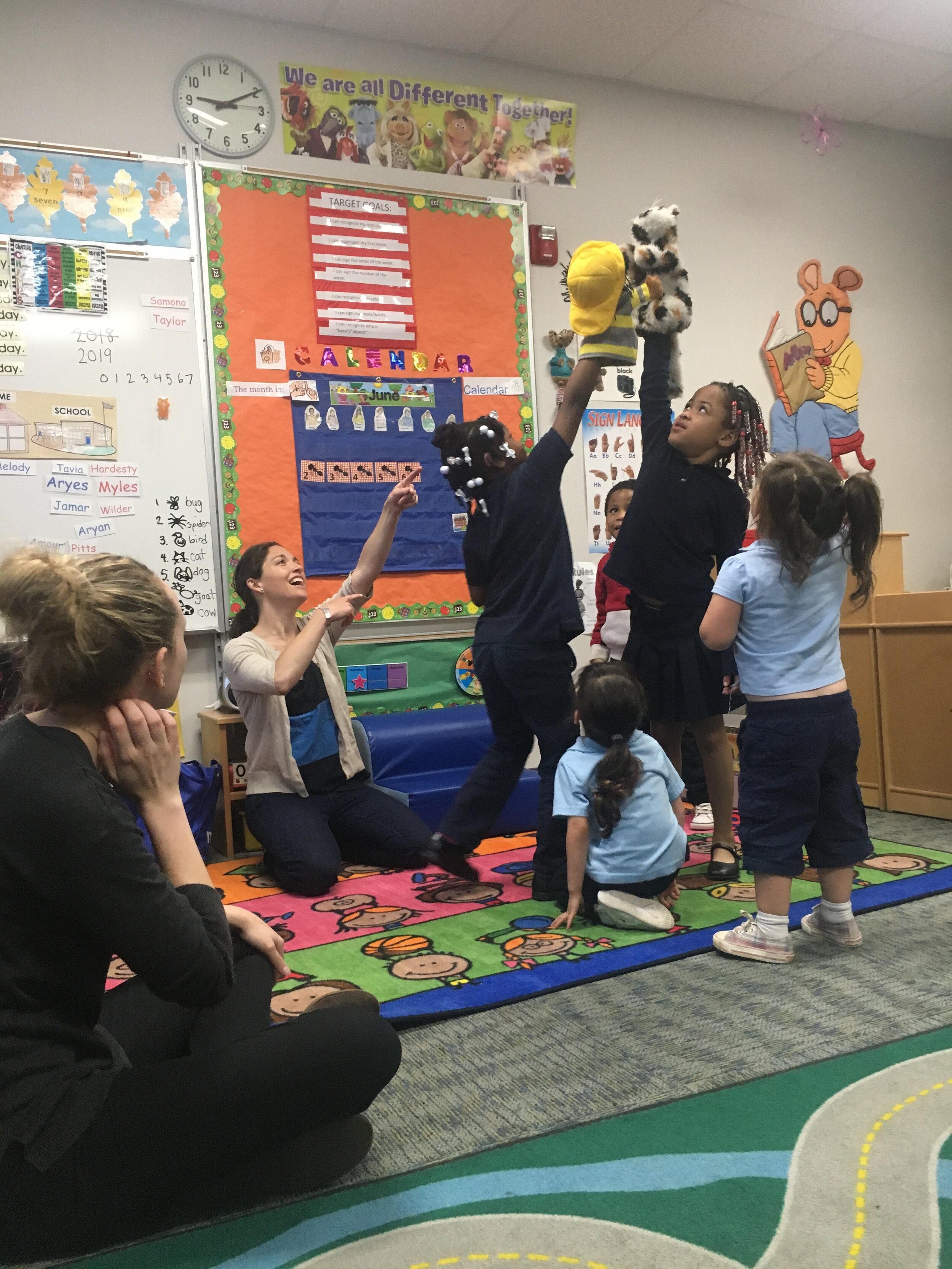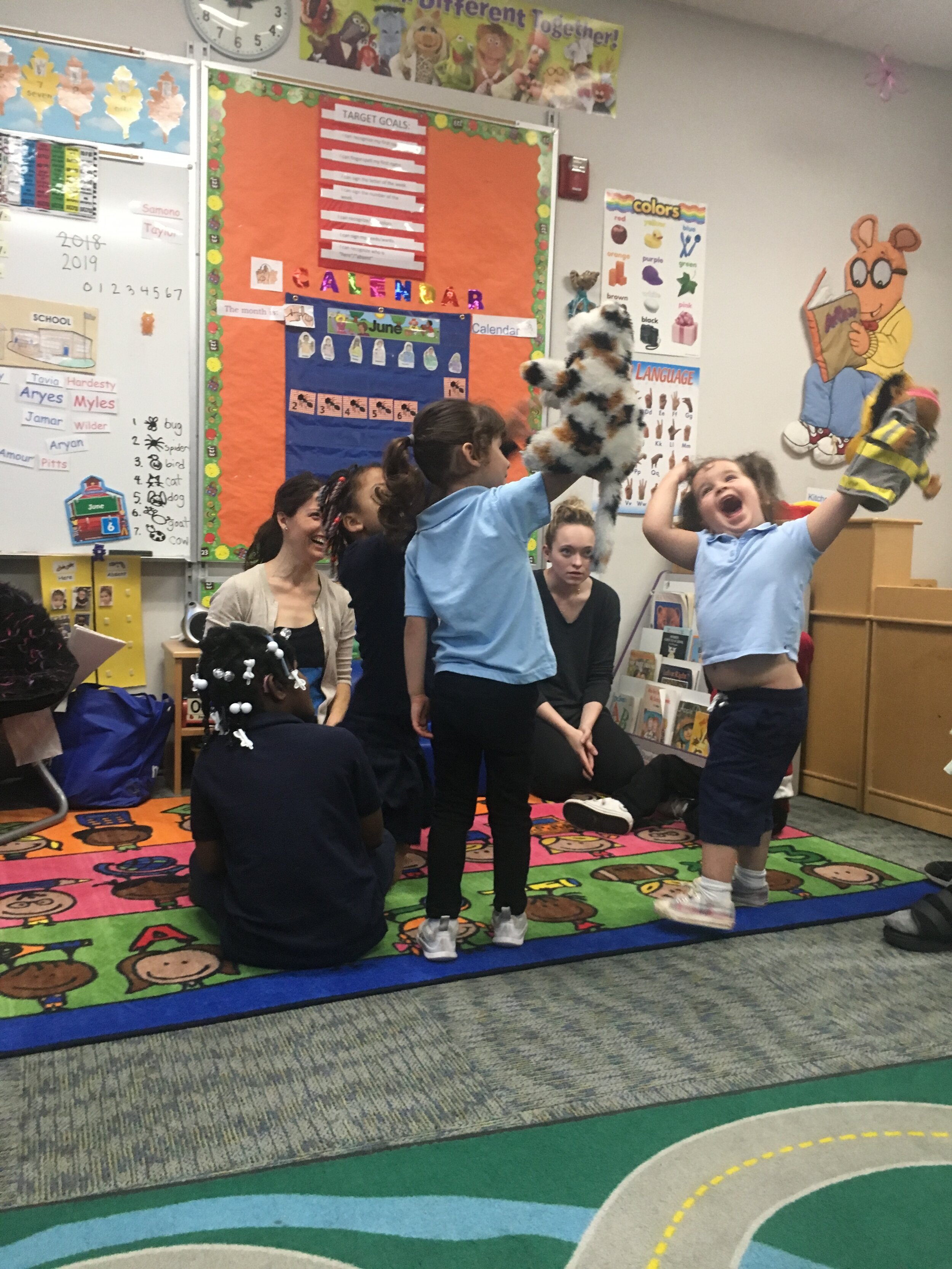Creating Meaningful Partnerships: An Interview with Teaching Artist Katy Schoetzow
Teaching Artist Katy Schoetzow with her DHH students.
One of Living Arts’ core values is partnership. By cultivating relationships with schools, educators, families, and institutions, Living Arts creates collaborative and creative learning experiences for Detroit's youth. One such partnership is between Living Arts, Shulze Academy, and Teaching Artist Katy Schoetzow. As we enter the fifth year of this partnership, we interviewed Katy about her work and collaboration with her students and the Shulze faculty.
Krystle Cheirs-Roberts: How long have you worked as a Teaching Artist for Living Arts at Shulze Academy?
Katy Schoetzow: I started in 2015.
KCR: What population of students do you serve (ages/special needs) and why?
KS: The program has evolved a lot since I've been there. Now I work with deaf and hard of hearing (DHH) students ages 2-9 and emotionally impaired (EI) students in first through sixth grades. In our original residencies, these groups were mainstreamed with other classes which meant:
a) class sizes were very large and
b) the material was only modified to fit their needs instead of created intentionally for those needs
Now that I'm directly in the classroom it's much more focused and these kids are at the forefront of their experiences.
KCR: How did you get into working with this population of students?
KS: Before moving to Detroit I worked with VSA in Grand Rapids (now Artists Creating Together) as a Program Manager and Teaching Artist so I had previous experience with special needs populations. Also when you're looking at the social/emotional curriculum goals for DHH and EI students, communication is the main tenet and drama is a natural fit for that.
KCR: What inspires you about working with your students?
KS: I particularly enjoy working with the DHH kids because it's very much an environment of mutual learning. When we establish dialogue for a scene we're working on, they teach me the sign as they're learning their parts. We make choices and build our stories together which provides fantastic insight into their lives and personal experiences. It feels like a true collaboration.
KCR: What relationships have you built in your classrooms?
KS: I've been in these specific classrooms for two years now (and before that many of these students were in my mainstreamed groups) and the great thing about a special education program is that kids aren't shuffled around to new teachers every year. So there are a couple of kids I've had for four years now. We don't have to spend the first have of the residency establishing trust and building a foundation for the work we're doing. It's also great because there are always a mix of new and old faces each year and it gives the returning students an opportunity to become leaders and mentors for the new kids. The relationships with the teachers have also benefited from this. We know what to expect so when we start the new year we're both full of ideas right away.
KCR: Why is this work important to you?
KS: Consistency is incredibly important for children. Special programs that come in for a couple of weeks and teach something new are great, but a program that returns every year and builds off of the success of the previous year has so much more impact on the academic success and personal growth of these students. The kids know they can count on me to keep coming back so when I ask for contributions and commitments from them, they are more than willing and what we've been able to create is much more personal and brave because of that.






